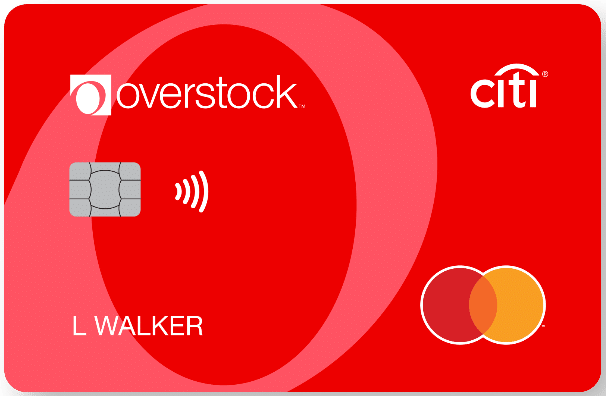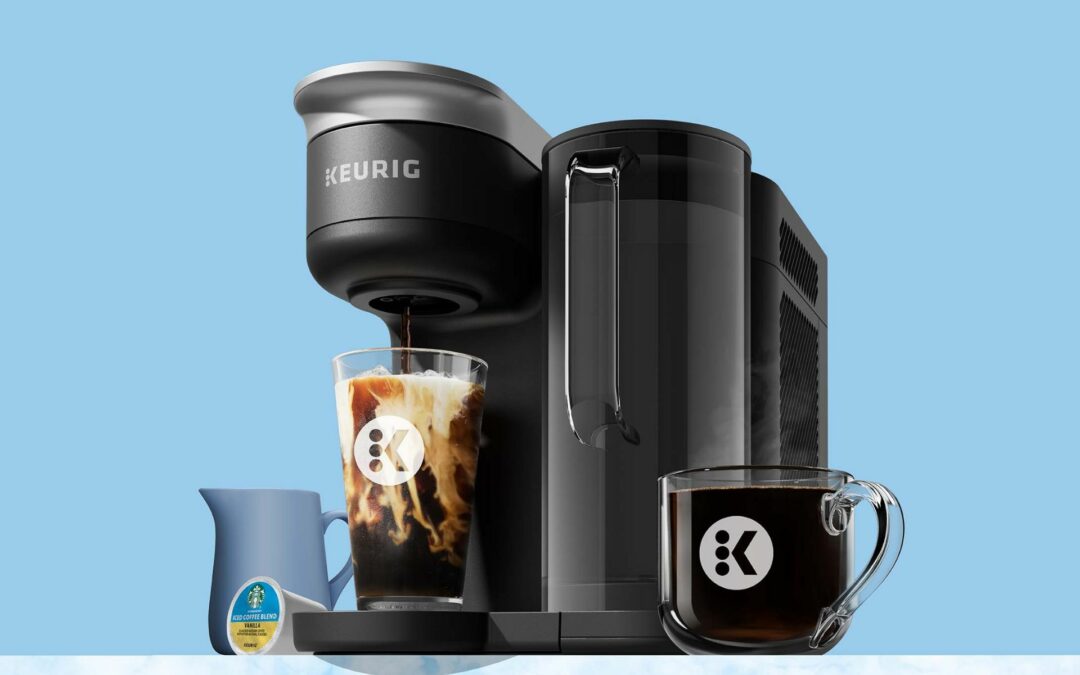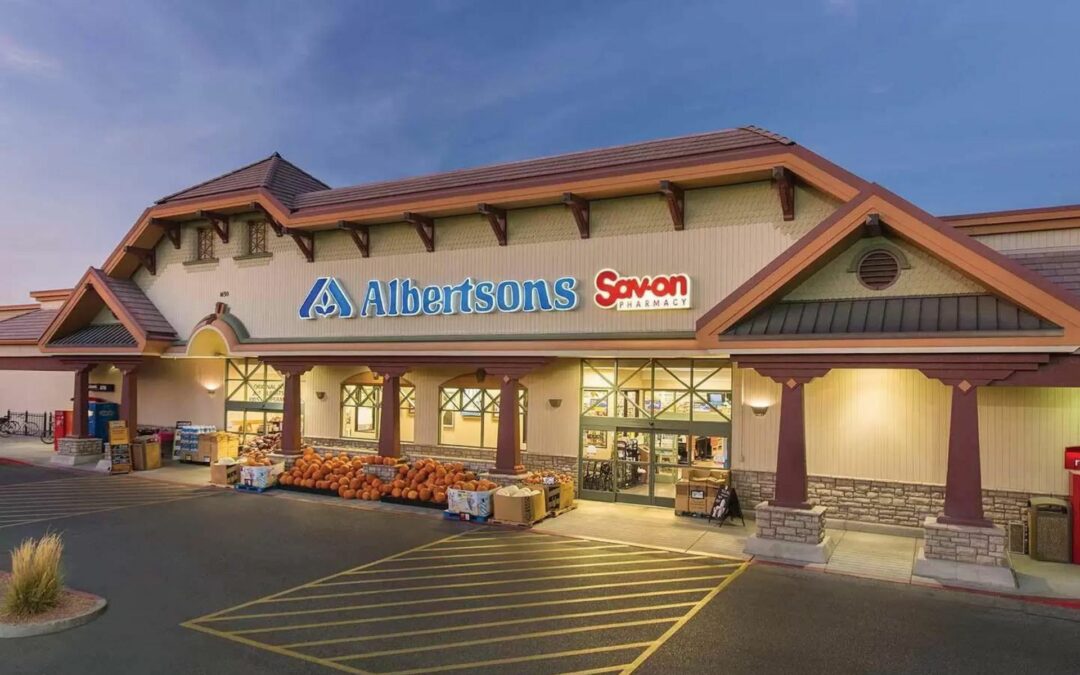As it transitions to a specialty home digital retailer, Overstock is adding products, upgrading its site and aggressively marketing itself so consumers understand its new positioning, CEO Jonathan Johnson told HomePage News.
Although it faces the same challenges most home goods retailers do today, given that consumers who spent heavily in the category during the pandemic have lately shifted a proportion of their spending to other sectors, Johnson is optimistic about the year ahead.
Although the company had carefully prepared its shift to a home-centric format, even shedding strong non-domestic categories such as jewelry, external factors suddenly imposed themselves in ways that made the change more difficult. Specifically, Overstock was exercising the final phase of its pivot to home-only sales just as consumers who had invested heavily in their homes during the pandemic were beginning a spending shift to apparel, restaurants and travel as stay-at-home guidance associated with the COVID-19 pandemic became less urgent. At the same time, inflation intensified and shipping issues produced consumer confusion. As such, the home goods sector found itself coping with a greater-than-expected slowing of sales that began toward the middle of 2022, then more promotional activity than could have been anticipated particularly as major retailers had overpacked inventory early in the year and had to offload stock.
“People weren’t shopping as much on home,” Johnson said. “The timing wasn’t great. That said, our suppliers and vendors who have worked with us for years stuck with us, and, frankly, we were a solution for them because some of their other distribution channels canceled orders in 2022. Our suppliers were looking for channels to sell their products through and Overstock turned out to be a great one.”
Despite the market challenges, Johnson said Overstock believes the home opportunity is a great one as the company prepares to work The Inspired Home Show, March 4-7 in Chicago, to outline its home-focused plan and secure new resources. The first half of this year may remain slow for the home business in general, but stronger prospects could emerge, he said.

Jonathan Johnson, CEO, Overstock
I think 2023 is going to be a tale of two halves. The pandemic helped us acquire millions of new customers and, in our transition to home, from the beginning of 2021 to today, we’ve more than doubled the number of home-related SKUs we offer on our site.
– Jonathan Johnson, CEO, Overstock
“I think 2023 is going to be a tale of two halves,” Johnson said. “The pandemic helped us acquire millions of new customers and, in our transition to home, from the beginning of 2021 to today, we’ve more than doubled the number of home-related SKUs we offer on our site.”
Even as it shifted strategic focus, Overstock had to advance backroom development to elevate the consumer experience on the site as it became more home oriented.
“When we take the non-home products off the site there’s de-linking so we’re not sending search terms to Google and Google’s not finding things in their natural search we don’t have,” Johnson said. “We’re currently in the process of overhauling our internal search structure and taxonomy to reflect our focus on furniture and home furnishings. That search process will make it, when it’s done, easier for customers to find exactly what they are looking for. Some of this we anticipated, in some places it’s been more difficult, but overall, front room, back room, this change in focus will be 100%. Making dream homes come true for our customers has been the right thing for us.”
On site design, Johnson said, it has become cleaner with a more artistic flavor to the look. Then, he pointed out that it’s easier to find curated rooms now than before the changeover, which is a point of emphasis.
“One of the things we did was partnered with six home-focused brand ambassadors who are expert in renovation and home decor and designing,” he said. “They put rooms together so there is more of a curated look and feel. There’s also been an emphasis particularly in the fourth quarter on giftable products. As we took jewelry and watches and apparel off the site, those tended to be good products in the fourth quarter. Fourth quarter is no longer our biggest quarter, but we did well by adding small appliances and home essentials like pots and pans and knives and small appliances, things like coffee makers, mixers, blenders, vacuums, things that are more giftable than a dining room table is. Those categories particularly in the branded like Mr. Coffee, Oxo, KitchenAid, Dyson, those had more prominence on the site in the fourth quarter.”
The changes in product mix and site look and function has helped consumers see Overstock in a new light, Johnson noted.

Amber Dunford for the Overstock Stylist Commentary Series
“As shoppers come to our site, they’re viewing us more as a premier destination with new, on-trend home goods,” he said. “We have to elevate that shopping experience for them by providing inspirational and helpful design solutions. They know they can get a great deal. Now they know they can come here and find the look they’re looking for and the help they’re looking for. We’re consistently refining the shopping experience to best match the customers’ home desires.”
Johnson said Overstock, as part of its business reconfiguration, is emphasizing national brands where such brands can make a difference.
“I think it’s really important as we rebrand into home. People recognize us as a destination, and it’s also important that they associate the Overstock name with on-trend home goods, not liquidation. We’re not a liquidator. That’s a two-decade-old thing. We moved from being a liquidator two decades ago to being a general merchandiser and now being a home-focused online retailer. So having brand names is really important.”
National brands not only give consumers a better sense of what Overstock is about today, but they also have a halo effect, he said. In those furnishings categories where labels aren’t as prominent, the national brands carried, especially in housewares, assure consumers that what is being offered across the site is of solid quality.
The changes by Overstock haven’t been accomplished easily.
“Getting rid of all of our non-home products was, on some level, a difficult decision,” Johnson said. “When we made the decision, non-home was 20% of our revenue. Not many businesses say, let’s turn off 20% of our revenue. We decided to do it in a measured, slow way, first turning off the easier products then turning off the more difficult products like jewelry and watches. I think the hardest thing about that really was some of those suppliers, some of those partners had been with us for decades. They were personal friends of mine and many of the people that they worked with at Overstock over the years. Saying goodbye to their business was hard, but it was the right thing for our business to grow in the future. And that’s paid off because we had home product suppliers that wouldn’t do business with us in the past because they didn’t want their products next to non-home products, come to us and say, now it’s the time to do business with Overstock.”
New Outreach
Even as it made other moves in completing its shift to home-centric operations, Overstock acted on how larger developments could affect its business moving forward. In a key insight, Overstock recognized early on that consumers were shopping more for home products and even furniture through their mobile devices, Johnson said. So, the company promoted its mobile app to better accommodate customers who wanted to shop on a smartphone or tablet. The move paid off, he said, noting the Overstock version was the most downloaded furniture app on Android and iOS last year.
“That has been particularly useful for us,” he said, as mobile “has become our fastest-growing sales channel.”
Customer engagement remains a critical issue, and Overstock has taken steps to make its operations more attractive to consumers.
“In late 2020, we began offering free shipping on everything for our continental U.S. customers,” Johnson said. “It’s clear that’s been a win-win with our customers, particularly with bulky items, which is furniture. We’re committed to continuing to add benefits like that. Search experience, the curated rooms, the move to giftables, expanding the SKU count in good, better, best so our savvy shopper can find the best deal for the price point she’s willing to pay. All these things I think have been helping customers achieve their home goals.”

Overstock Loyalty Program, Club O
The company’s loyalty program is still attracting customers, Johnson said, which is a benefit both to them and to Overstock.
“Our Club O membership program continues to be very popular,” he said. “Customers that are Club O members shop on the site more frequently, convert at a higher rate, have a higher average order side, and we will be rolling out a more robust credit card offering.”
Just launched in early February, the new Overstock Mastercard offers complimentary Club O membership, saving holders the $19.95 annual charge and giving them a range of purchasing rewards. Club O membership includes access to extra rewards, free returns, a price match guarantee and double rewards for reviews. The card, launched with Citi Retail Services, has no annual fee attached and comes with special financing for up to 60 months on designated purchases.

Citi Overstock Mastercard
Early on, Overstock was an aggressive marketer with memorable advertising. Now, the company is again extending consumer outreach, Johnson said.
“We’ve launched a brand campaign across multiple channels,” he said. “That started in October of last year, highlighting our 100% home focus. The ad is entitled, ‘Come On, Get Comfy.’ ”
The tune is familiar to many from the Partridge Family song “Come On, Get Happy.”
“It’s kind of an earworm,” he noted. “It’s hard to stop humming. But it reinforces the intersection of home products, design expertise, smart value, communication. We’re a home company. While less and less people watch TV or ads on TV, the reception we’ve seen has been good, particularly the YouTube ads and things we’ve done on social media. That’s been very helpful. Then both our brand ambassadors and influencer campaigns have helped people understand how we’re re-engaging and re-engaging with this newly positioned home business. So it’s pretty exciting stuff.”
New realities have provided new marketing challenges and opportunities, Johnson said, but the ability to go beyond television commercials has helped it target consumers more effectively.
“Two decades ago, when we launched big on TV, you discovered the secret of the O,” he said. “That was really putting us on the map. The world has changed since then and performance marketing has gotten better. The ability to measure return on ad spend is so good, and people watch less cable TV. There’s streaming. Ads are easier to avoid. So we balanced the two. But I don’t think, as we refocus our brand on home, you’ll see our splash as big on TV the way we did a long time ago. Our presence will be more than it has been in recent years. TV is the hardest thing to measure your return on ad spend. You do it a little bit on faith. Ad agencies will give you numbers, but the numbers are surely a lot cloudier than they are when you’re doing paid keyword or PLA with Google.”
In part, the change in media and generations means Overstock has had to take a broader approach to outreach than it did in the days when it was a major TV advertiser. Especially with new generations emerging as apartment dwellers and homeowners, the outreach has to be diverse and include building the consumer relationship. It is there that the Overstock app and a significant social media marketing program can promote additional sales.
Johnson noted that the new in-app features and the evolving platform have been part of making Overstock more engaging. Yet, working through social media platforms, whether those of Facebook, Instagram or TikTok, is where Overstock can become even more interactive in ways that younger consumers can appreciate.
In part, the change in media and generations means Overstock has had to take a broader approach to outreach than it did in the days when it was a major TV advertiser. Especially with new generations emerging as apartment dwellers and homeowners, the outreach has to be diverse and include building the consumer relationship. It is there that the Overstock app and a significant social media marketing program can promote additional sales.
“There is always something new,” Johnson says. “We’ve adapted by creating content that encourages interaction with shoppers, things like quizzes that focus on style. If you look at what our brand ambassadors are doing, the really quick videos: Are you gold or silver? Are you leather or velour? You ask a lot of these questions.”
Besides helping consumers figure out their home decor preferences, Overstock’s brand ambassadors become curators. Shoppers can align with their ambassador or ambassadors of choice. Ambassador activities on the site, such as curating rooms to make it easier to shop a look or providing advice consumers can take with them as they check out the broader assortment, support the overall goal that Overstock has set for itself: helping consumers build their dream homes. So, Overstock is using the input from its ambassadors as tools for the customers to use in shopping. The company even goes a step beyond ambassadors and influencers and draws from outside sources including customer content to provide more perspectives on shopping the available assortment.
“People can watch quickly and see what the ambassadors they like are doing,” Johnson said. “We share user-generated content shoppers or what influencers send us, and that enables beautiful images across lots of social platforms. We can’t just use traditional methods. We can’t also rely on people who were loyal shoppers a decade or two decades ago. It’s the new homeowner, it’s the person who moves into their new apartment. We want them to think Overstock, and think of us as smart value and an easy place to shop and find their product and return their product. As people build their dream homes, we want them to think we’re the place where that comes true.”

HGTV’s Luke Caldwell, Overstock Brand Ambassador
It doesn’t end there because the constant flux in media today can generate rapid change. So, Overstock considers its app as an important vehicle that it can use to help it manage communication with the consumer on an ongoing basis.
“As far as interactivity with customers, the app is great,” Johnson says. “We’re able to push things to them. As I noted, it’s the most downloaded furniture app on iOS and Android last year. Our customers love the app because it has features that make buying decisions easier. We’ve dipped our toe in the water with AR and 3D functionality that lets people understand what the items will look like in their space. We did a beta test last year and paused that as we work on it.”
Overstock has a range of initiatives in development to enhance interaction with the customer through technology.
“Our brand ambassadors and influencers engage with our customers in lots of ways on shoppable content that is really inspirational, videos saying what they love designing rooms on our site. Here’s Luke Caldwell’s room. You can click on products in the room, see them right away, put them in your shopping card and buy,” Johnson said.
Present Challenges
As 2022 ended, the holiday season was something of a slog for Overstock and other home goods retailers, Johnson said. But Overstock saw categories where it generated substantial growth.
“Purchases of giftable items such as small appliances increased significantly,’ he said. “We really put a focus on that. We saw an opportunity where other retailers were struggling, to pick up the slack, to go to their suppliers and make them our suppliers. So we anticipated that customers would want those products during the holidays, and we were able to supply them.”
Overstock is looking forward to the year ahead, Johnson said, as the company pushes to expand its customer base through new channels and boost marketing efforts. Then, in the second and third quarters, Overstock will turn its attention to outdoor living and associated products. He says the new credit card will help the company with retention and loyalty as it makes advancements in personalization.
“I’m excited for 2023,” Johnson said, “particularly for the back half of 2023 when I think when the industry gets through what still is a glut in supply.”
The experience of transforming to a dedicated home format has led to new discoveries and ideas at Overstock, Johnson said.
“We’ve learned that our asset-light business model positions us really favorably versus our peers in the industry,” he said. “It did so during the pandemic when the supply chain broke, and it was hard for everyone to get inventory. Our vast partner network meant we had better inventory during the post-pandemic highly promotional period because we don’t own inventory that is expansive. We could work with our suppliers to bring the price down and remain promotional without hurting our gross margin. We’ve learned throughout the pandemic and the last quarter how important the asset-light model is. We’ve also learned how important it is to have a strong balance sheet.”
A number of competitors have confronted financial turmoil but Overstock remains solid, Johnson said.
Overstock is looking forward to the year ahead, Johnson said, as the company pushes to expand its customer base through new channels and boost marketing efforts. Then, in the second and third quarters, Overstock will turn its attention to outdoor living and associated products. He says the new credit card will help the company with retention and loyalty as it makes advancements in personalization.
“Our balance sheet is robust,” he said. “It allows us to pay our suppliers quickly, which means they’re more eager to do business with us particularly in tough times. And we’ve learned that online shopping in the furniture space, which surged during the pandemic, is here to stay. It may have ebbed just a little bit, but when you look at it compared to what it was pre-pandemic, it’s still so strong.”
Johnson said he’s optimistic about the position Overstock has set for itself in the market.
“We like who we are. We like where we are. We like who we market to. We think our business is in a really good place,” he said.
He added, “Over the years, Overstock has succeeded when we focused. When we focus on who our customer is. We know that today. When we focus on what we’re selling. We’re more focused there than ever. And when we focus on what we call our financial recipe card: sustainable, profitable market share growth. We were profitable in the recession: 2009, 2010 and beyond. We’ve remained profitable unlike our peers. I think those areas of focus set us up for success.”
Today, Overstock wants to keep its attention firmly fixed.
“We think focus is the right thing,” Johnson said. “I think we’re in a recession that’s going to last a while, and not all of our competitors are going to get through it. Or they’ll get through it and come out damaged. With our strong balance sheet and focus on our P&L, we think we’re going to come out with sustainable, profitable market share growth stronger than ever.”





